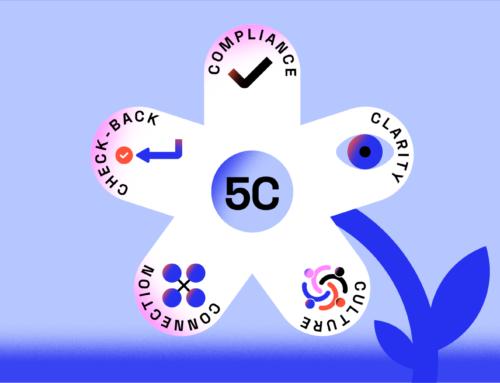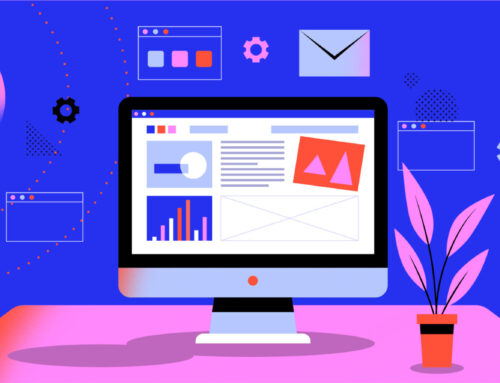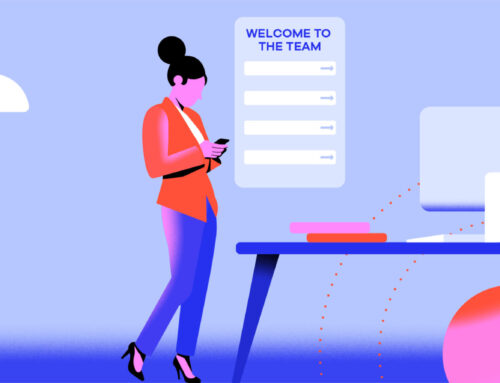Last Updated on October 24, 2021 – 6:37 pm
Are you welcoming new hires remotely after Covid19? Want your remote employees to get up to speed quickly and confidently while working remotely? Want to keep your retention rates high during times of crisis? Don’t forget to establish meaningful “connections.”
Onboarding, which enables an employee from new hire to a proficient colleague, is one of the five stages of the employee life cycle with recruitment, development, retention, and separation. Studies indicate a well-executed onboarding program gets employees engaged early, raises retention, and improves productivity. Yet, most companies see onboarding as an administrative process at worst, an info-dumping event at best. An MIT study found that most firms tend to use an informational approach to orienting new hires, providing them with a smorgasbord of information about company routines and technologies. Providing too much information in a short onboarding program has unintended consequences because newcomers typically cannot prioritize the information they encounter. So, they end up seeing everything as necessary, exhausting themselves trying to comprehend every manual, report, and database they encounter. Those who feel overwhelmed might give up altogether.
The same study showed that a relational approach to onboarding is far more effective. In this study, the researchers look at the relationship between a new hire’s connectedness and her/his time-to-proficiency. In this network diagram (below), arrows represent the direction of an information relationship (the purple dots are new hires). The study found that a well-connected new hire (Jake, in this diagram) becomes proficient much faster than a less-connected new employee (Fred, Jim, and Bill).
Other research supported the power of relations in onboarding. A study conducted by renowned onboarding researchers Talya Bauer and Sushil Nifadkar found that new software engineers in India who did not establish meaningful connections with co-workers sought out less organizational information, a behavior that’s crucial to newcomer success.
Dr. Talya Bauer sees the connection as one of the top C’s of an onboarding program (others include compliance, clarification, and culture). “A summary of more than 12,000 newcomers found that connection was the most important aspect of onboarding because it is the only aspect of onboarding related to all of the outcomes… When new employees feel more accepted, they take more risks, ask more questions, and are more open to learning about their new job, role, colleagues, and organization.” Thus, they have a healthy base of relationships within the organization to draw upon as they encounter new challenges during their first year.
How to Focus on Connection
Connection serves as an essential lever that organizations can focus on to ensure that new employees are up and running as quickly as possible. But what do we mean by “connection”? Bauer defines connection as “the key interpersonal relationships, support mechanisms, and information networks that new employees need to establish upon entering a new organization.”
Effective organizations employ several connection mechanisms in onboarding programs. According to Dr. Bauer, the best practices of connection are “assigning mentors or buddies, key introductions, key stakeholder check-ins, and the effective use of technology during the onboarding process. The goal of each of these relational mechanisms is to identify the people a new employee needs to meet as well as ways to ensure these meetings take place early in the relationship and at regular intervals.”
Let’s have a look at best connection practices during onboarding.
1. Key Introductions
Help newcomers immediately meet with key contacts is a top priority of a best-in-class onboarding program. Any manager’s first job is to list the business-critical person whose new hire should meet. It’s also more comfortable for the newcomer to meet with these busy people with the manager’s help. The manager can start the dialog with an introduction email so that the newcomers won’t be “cold calling.”
Companies use applications to guide managers with timely reminders and assignments. For example, the Journey app sends an automated reminder to the hiring manager five days before the new hire’s start date. Journey app ensures the hiring manager defines the new hire’s business-critical contacts, notifies the new hire, and follow-up. The app also lets the manager introduce the new hire to the key people and organize meetings.
2. Key Stakeholder Check-ins
Leading corporations know the importance of connection during onboarding and put it into practice. Bank of America arranges key stakeholder check-in meetings for its entry-level executives regularly during that first year on the job. “The bank sees this part of onboarding as a proactive way to head off potential problems before they grow by making sure newcomers receive focused attention from a key insider who can help them be more effective in both the short and long run.”
As a best practice, experts recommend three onboarding check-ins between the manager and the new hire: after the first week, after the first month, and at the end of the third month. Companies can digitize this process by apps like Journey. When a new hire starts work, Journey sends automated check-in invites to both the managers and the new employee. These invites include suggested agenda items that are relevant to each of these three check-ins.
3. Everybody needs a “Buddy.”
Matching the new hire with a peer buddy is vital to help new hires get oriented in their new role. In “Leading Apple with Steve Jobs,” Jay Elliot details the Buddy System in Apple as follows: “It was also important for new employees to be connected to people who really understood the Apple culture, so we would assign each new hire to someone in the organization—someone the person did not know—who would become the newbie’s ‘buddy.’ The buddy’s job was to give answers and provide support or reassurance as needed, whenever the new hire had questions or concerns about Apple or his own job.”
Microsoft tested the buddy program’s efficiency by looking at the difference in hires assigned onboarding buddies versus those who were not. After their first week on the job, new hires with buddies were 23% more satisfied with their overall onboarding experience than those without buddies. This trend continued at 90 days, with a 36% increase in satisfaction. Those with buddies also reported receiving more active support from both their manager and the broader team.
4. First assignments that focus on relationship building
A stretch assignment is a perfect tool for improving connections. Newcomers with stand-alone assignments tended to remain isolated and failed to build the relationships they needed to succeed in the long term. Thus, the hiring manager’s first assignment should require the newcomer to build relationships with a variety of people to get work done. Here are some suggestions for hiring managers.
* Design the first project so that the new hire can’t complete it without assistance from co-workers.
* Assign newcomers to cross-functional teams that expose the new hire to a broad network of resources.
* Review progress on the first assignment by asking not only, “What have you accomplished?” but also, “Who have you talked to?”
5. Personalized messages?
Personalized messages, i.e., videos, mail welcome cards signed by the team, can drastically increase connection. Jessica Delorenzo from Kimball Electronics says, “This is a way to maintain a physical and human connection in the absence of handshakes and on-site welcome sessions.” Typical examples are a welcome video from the CEO, a personalized welcome video recorded by the team, and more creative solutions companies can figure out by asking some survey questions to new hires like “What is your favorite coffee?”.
The human connection is vital in the onboarding process of a new hire. During these unprecedented times, although it may change shape, it still keeps its value and importance.
If you want to learn more about new hire onboarding, you can check out our blog posts here.









Leave A Comment